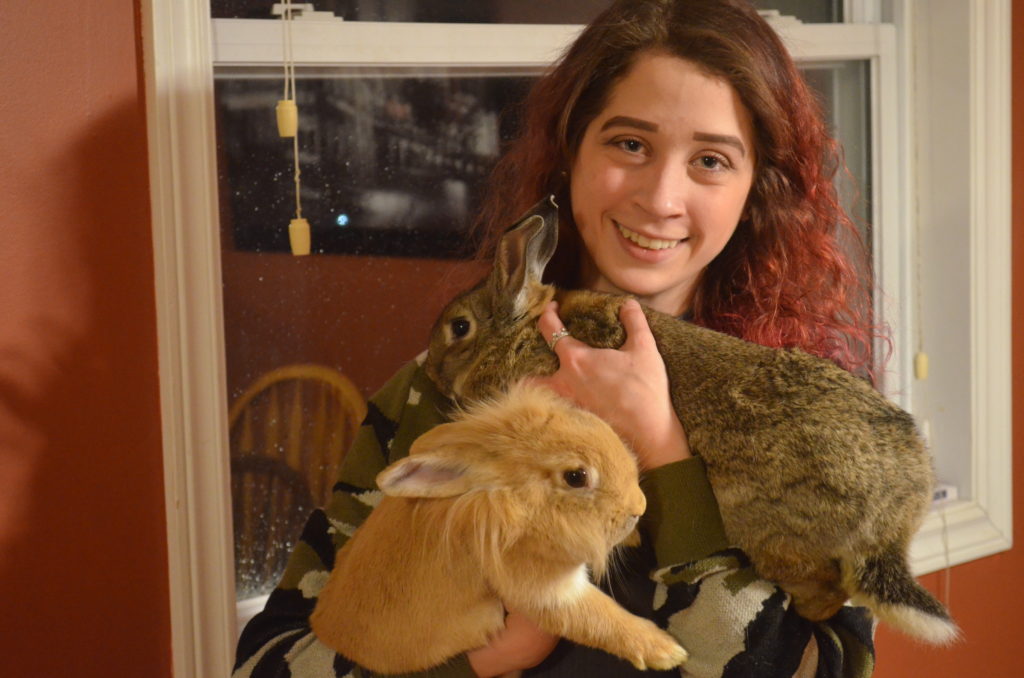“There’s a huge difference between eating something to survive and rubbing a substance on a living thing to see how much damage it will do.”
By Victoria Plowman
Kicker

The cruelty-free trend is a growing phenomenon in the cosmetics industry, as many popular brands are giving into the buzz and converting to humane methods of testing their merchandise.
Animal-lovers of all kinds have dedicated themselves to buying only products that have not been tested on animals – both vegetarians and meat-eaters alike. For Megan Osmond, a Memorial University biology graduate who’s devoted herself to purchasing only cruelty-free cosmetics, it wasn’t a difficult transition.
“It really isn’t any more expensive to buy cruelty-free products,” she said. “It can be difficult at first, but once you get used to it and you know where to look and what brands are cruelty-free, it’s much easier.”
Osmond, 23, said she made the decision to discontinue buying from brands that test on animals about two years ago. As the owner of two bunnies herself, she said she can’t imagine putting them at risk. Although she still eats meat, Osmond doesn’t correlate that and animal-cruelty under the same category.
“I personally think there’s a huge difference between eating something to survive and rubbing a substance on a living thing to see how much damage it will do,” said Osmond.
For Karissa Day, who has been a vegetarian for almost seven years, the morals behind her adherence to animal rights in regard to cosmetics remain the same as Osmond’s.
“I switched because I felt bad,” Day said. “I know it’s a requirement to test on animals if you’re selling cosmetics in China, but nothing excuses taking another life into your hands and dismissing it, especially an innocent animal.”
Kicker spoke with a cosmetics store employee in St. John’s about what animal-testing generally entails. Kicker has decided to keep her identity private in order to protect her position with the company.
According to her, animal testing isn’t always as simple as people may think.
“Obviously for cosmetics, it’s often applied to the animal’s skin to see if it causes a reaction – which most times, in the first round of production, it does. But animal testing can also include force-feeding the animals potentially harmful substances, forcing them to inhale toxic gas, and exposing them to radiation.”
Among the brands that do test on animals are Benefit Cosmetics, NARS, Clinique and Sephora Collection.
“I personally would say that at least five clients that I serve every shift are specifically looking for cruelty-free products,” she said.
For a list of cruelty-free brands as of 2017, click here. Among the most popular are Kat Von D, NYX, Too Faced, and Wet n Wild.
“One other thing is that a brand might be cruelty-free, but the company they’re owned by might not be. For example, Too Faced is cruelty-free and some of their products are even vegan, but Too Faced was recently bought out by Estee Lauder, which isn’t cruelty-free,” said the cosmetics store employee. “So some clients aren’t comfortable with using Too Faced or other brands owned by Estee Lauder because the ethics aren’t entirely great.”
All three women agree that the internet is filled with resources and information for anyone interested in switching to humane cosmetics.
To search for specific companies and brands that are or are not cruelty-free, PETA has just the resource: Cruelty-Free Company Search.




Be the first to comment